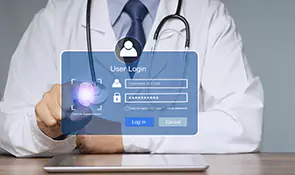
It is very wisely said that “learning is an endless process”. Learning never stops throughout life. You can learn a new skill, a new language, or a new technology; it always helps to stay with, or sometimes, ahead of time. The most successful people on earth never stop upgrading themselves to the advancing times. And this holds equally true for the medical profession as well.
CME for physicians is not the same as medical school. All doctors, be it in the United States of America (USA) or elsewhere in the world, spend 5-10 years of their student life under didactic study and practice of healthcare and related disciplines. But that’s not all. All countries of the world have introduced the concept of CME for physicians. Every nation would wish that its doctors are well-trained and updated with the latest knowledge in the field of medicine. Not all physicians comply with this duty out of their own free will. Hence, it has become mandatory to undergo CME for physicians as a partial requirement for being able to renew their medical licensures. The American Osteopathic Association (AOA) and the Accreditation Council for Medical Education (ACCME) regulate the CME for physicians in the USA. These CME programs are targeted to maintain, develop as well as increase the knowledge, competency and skill of practicing physicians.
Each state has a different CME requirement. When you attend a CME event for one hour, you get one CME credit. Likewise, different states have different CME credit requirements for the renewal of medical licenses. CME requirements by the state also vary according to the medical specialty. So, it is essential to be aware of the CME credits required per year as per the state regulations to avoid any rejection at the time of license renewal by the state authorities.
The CME for physicians holds its importance for multiple reasons.
Any physician can acquire CME credits based on certificates of attending various continuing medical education events. Each country has multiple medical field bodies which organize annual national medical conferences. These conferences have pre-decided CME credits which will be rewarded to all its attendees.
Online seminars (webinars) are another means of upgrading your medical knowledge as well as attending an event without visiting the site of the event. Webinars can be attended online while sitting in your home or office while earning CME credits at the same time with a nominal registration fee. Certain medical or pharmaceutical companies also organize free online education programs to impart knowledge as well as promote their products.
The practicing physicians are invited to attend such events free of cost while they can still earn precious CME credits. It is believed that post-COVID-19, most physicians prefer to meet CME requirements by state easily by the means of attending online events rather than visiting and traveling to continue medical education. Thus, CME for physicians is important for knowledge upgradation as well as advancement; as well as to meet the CME requirements by state of practice.
Still, do you need any more information regarding CME? Reach out to Credidocs and our team will be available to help you. With Credidocs, you can also store all your CME in our secure place. So, make sure to contact us.

Provider credentialing may well be described as a good example of bureaucracy at work, but it is a critical process in building credibility and quality in the delivery of healthcare services. Credentialing assures the patient that the professional meets certain minimum qualifications of education, training, or experience, thus creating trust. This process aims at ascertaining qualifications, licenses, certifications, and work experience as well.
In today’s healthcare landscape, healthcare provider credentialing has become indispensable, thanks to its role in patient trust, legal compliance, and operational efficiency. Let’s explore 10 essential aspects of provider credentialing.
The process of provider credentialing is the most essential aspect of developing strong relations between patients and healthcare specialists. When patients go to a doctor, they may not have any relevant information about the doctor or the doctor’s competence. Credentialing helps to check a provider’s identity, competency, training, and experience making the patient’s trust in the provider absolute. A verified healthcare provider makes patients have confidence in their doctor and hence can reveal vital details regarding their health.
Insurance companies again require one to be accredited to be paid which makes credentialing extremely important. Insurance companies require healthcare practitioners to prove the authenticity of their details whether used online or offline to be paid for the services offered. Professionals and hospitals fail to obtain reimbursements if they are not properly credentialed. Most medical billing companies give personnel the authority to practice while they wait to go through the credentialing process.
Annual avoidable deaths that result from medical mistakes are on the rise. Credentialing minimizes these risks because the skills and abilities of healthcare professionals called for on projects are ascertained. Thus, by choosing the provider carefully, the risks of the mistakes made by personnel not meeting the necessary qualifications are also minimized.
It may be observed that to a large extent, provider credentialing is mandatory whenever hiring in hospitals occurs. This process is a detailed scrutiny of the candidate’s education, previous employment experiences, licenses, and certification to meet the standard. The accreditation throughout the recruitment procedures not only fosters compliance but also makes hospitals embark on a strong pool of candidates who possess a satisfactory level of expertise and qualifications.
Credentialing expands the business opportunities for healthcare providers by enabling them to accept patients with insurance plans. Since most Americans rely on health insurance, credentialing allows practitioners to serve a larger client base. Furthermore, patients often prefer revisiting the same trusted healthcare provider, leading to recurring business.
Some states require provider credentials in a notice that must be included on medical and legal forms. If no credentialing is performed, then hospitals may find themselves in a lawsuit or facing penalties for violation of the by-laws. Healthcare credentialing companies such as Credidocs also hold useful information on malpractice and claims histories and help the organizations avoid lawsuits.
Healthcare organizations are always under pressure to reduce their expenditures and simultaneously, deliver quality services. Having proper credentialing is therefore efficient and affordable while replacing traditional paper-based methods. These systems also eliminate many administrative expenses and augment the levels of effectiveness and accuracy so that hospitals can pay more attention to quality care.
One of the less obvious benefits of provider credentialing is its role in authorizing payments from insurance providers. Credentialing ensures that healthcare professionals can treat patients with various insurance plans, making it easier to process reimbursements. By affiliating with healthcare credential companies, providers gain access to a broader patient base and secure a steady revenue stream.
Credentialing puts providers in a vantage point in a market that has firms offering the same services. In today’s world, patients are quite informed and they look into the credentials, specialties, and experience before they select a provider. It becomes easier for a professional to attract clients since credentialing establishes the professional’s abilities, training, and experience.
Provider credentialing is more than just a procedural requirement; it’s a cornerstone of trust, compliance, and efficiency in healthcare. By embracing modern credentialing processes, healthcare organizations can ensure quality care, reduce risks, and create a foundation for long-term success. For more details, visit Credidocs.com.

In healthcare, ensuring the quality of care and patient safety begins with the hiring process. A critical aspect of maintaining high standards in any healthcare organization is verifying the credentials of healthcare providers. Primary source verification plays a pivotal role in this process, helping organizations confirm the qualifications and experience of their staff. This not only enhances patient safety but also strengthens the trust patients place in their providers.
PSV is a process used by healthcare organizations to authenticate the qualifications of healthcare providers, including their education, licensure, certifications, work history, and more. Unlike relying on self-reported credentials or resumes, PSV involves checking these details directly with the issuing institutions, such as medical schools, certification bodies, or licensing boards. This ensures that the provider’s information is accurate and up-to-date, laying the foundation for providing safe and quality care to patients.
While the specifics of PSV requirements may vary by organization and jurisdiction, the following types of credentials typically undergo verification:
By thoroughly vetting these credentials, healthcare organizations mitigate risks and ensure they employ qualified, ethical professionals who are capable of providing high-quality care.
Healthcare organizations can implement various methods for PSV, each offering distinct advantages depending on resources, time, and technological infrastructure:
While PSV is vital for ensuring credential accuracy, the process is not without challenges. Common issues include:
Despite these challenges, primary source verification for physicians is essential for several key reasons:
For healthcare organizations looking to simplify and expedite the PSV process, Credidocs offers an ideal solution. Our Credidocs platform centralizes credentialing and PSV tasks, allowing healthcare providers to upload their credentials directly to the system. The platform tracks progress and provides real-time updates, ensuring all necessary verifications are completed efficiently.
Additionally, Credidocs offers credentialing specialists who can manage the PSV process from start to finish, reducing administrative burdens on in-house staff. This ensures greater consistency, faster processing times, and a smoother experience for both providers and patients.
By leveraging Credidocs services, healthcare organizations can improve their operational efficiency, reduce liability risks, and accelerate the provider onboarding process. This proactive approach to PSV ensures that healthcare organizations maintain the highest standards of care while fostering patient trust and safety.
In conclusion, primary source verification is an essential process for healthcare organizations that wish to maintain high standards of care. By adopting effective PSV methods, such as digital verification platforms or third-party services like Credidocs, healthcare providers can ensure the accuracy of their staff’s credentials, mitigate risks, and provide patients with the safe, reliable care they deserve.

In today’s fast-evolving healthcare landscape, staying up to date with the latest advancements is not just a recommendation; it's a necessity. For physicians, nurses, and other healthcare professionals, maintaining their medical licenses is a crucial responsibility that requires a firm grasp of evolving medical practices and standards. However, the role of Continuing Medical Education (CME) extends far beyond just fulfilling licensing requirements and its renewal. CME provides a critical platform for healthcare professionals to refine their skills, advance their careers, and deliver optimal patient care in a rapidly changing medical field.
Renewing a medical license can be a demanding process, especially for physicians who hold licenses in multiple states. Each state has its own deadlines, requirements, and processes, which can be overwhelming for busy healthcare professionals to manage. One of the most common challenges is the complexity of the renewal process itself, which often mirrors the initial licensure application. Physicians are required to submit a considerable amount of paperwork, such as proof of earned CME credits, malpractice insurance, an updated CV, a criminal background check, and proof of mental and physical competency.
The risk of allowing a medical license to expire can have serious repercussions. If a physician fails to renew on time, the reinstatement process is often rigorous, involving additional fees and assessments to demonstrate continued competency. For physicians who have been out of practice for a significant period, a clinical skills assessment program may also be required. This underscores the importance of verifying the license status by monitoring physician license lookup databases to avoid any gaps in professional practice.
While navigating the renewal process is essential, it only scratches the surface of what CME offers. CME is not just about meeting legal obligations; it’s about continuous learning and growth as a healthcare provider.
CME is an ongoing process of education designed to enhance the knowledge, skills, and performance of healthcare providers. It allows physicians to stay current with medical advancements, improve patient outcomes, and sharpen their professional expertise. According to the Accreditation Council for Continuing Medical Education (ACCME), CME encompasses educational activities that contribute to the development of medical professionals, helping them deliver high-quality care to patients, the public, and the profession.
CME is generally divided into two categories: Category 1 and Category 2. Category 1 credits are formal, pre-approved educational activities such as seminars, webinars, and conferences, while Category 2 credits are self-designated and can be earned through less formal activities like journal reading or case discussions. Both categories, however, must meet specific standards, ensuring that the content is relevant, non-promotional, and offers genuine learning opportunities.
As a result, CME not only helps them maintain licensure but also equips them with the skills necessary to handle the ever-changing challenges of patient care.
CME plays a pivotal role in improving overall patient care. Medical research and innovations are constantly emerging, influencing how physicians treat conditions, manage chronic diseases, and approach patient care. Through CME, healthcare providers can stay informed about these developments, ensuring they are delivering evidence-based care to their patients.
CME also helps healthcare professionals grow in their careers. A proactive approach to learning demonstrates commitment and drive, traits highly valued by employers. Physicians who consistently pursue CME are better positioned for leadership roles, promotions, and opportunities for professional development. Moreover, participation in CME can boost a provider’s credibility, enhance their reputation within the medical community, and offer networking opportunities with peers and industry leaders.
For healthcare providers managing teams, CME can also serve as a tool for honing leadership and management skills. Courses focused on practice management, educational methodology, or healthcare systems can improve a physician’s ability to lead a clinic or department, enhancing both individual and team performance.
While regular monitoring of physician license lookup databases to verify the license status is essential, CME’s value stretches far beyond compliance. It’s about ensuring that healthcare professionals are equipped to meet the needs of their patients, embrace advancements in medicine, and navigate the complexities of the modern healthcare environment.
For healthcare providers, CME is not just a requirement—it’s an opportunity to improve, innovate, and excel in a profession that demands nothing less than excellence. You can also get in touch with Credidocs for more details about license renewal and CMEs.
Coprights ©2025 CrediDocs. All Rights Reserved Privacy Policy Terms & Conditions
Coprights ©2025 CrediDocs. All Rights Reserved